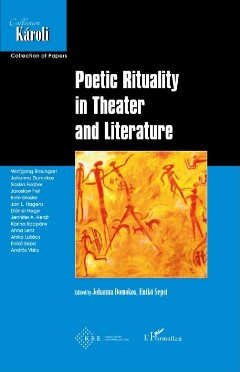Page 9 [9]
INTRODUCTION
——~<~o»—___
POETIC RITUALITY,
OR THE RITUAL ALWAYS AT WORK IN THE ARTS
An understanding of ritual is highly relevant for the analysis of theater and lit¬
erature since ritual elements not only generally support but also substantially
determine the aesthetics of such works as are created within these disciplines.
Rituals are performative, symbolic, and, at the same time, highly aesthetic
practices. In the same way, art works have dominant performative, symbolic,
and ritualistic characteristics. However, arts and rituals are not equivalent
cultural practices. What do they have in common and what is the difference
between artistic practices and socio-cultural rituals? Why is it important to
be aware of the aesthetics of rituals and the ritual aspects of art works?
In art as well as ritual studies toward the end of the twentieth century, cul¬
tural turns contributed to elaborating a broad definition of ritual and rituality.
Rituality is now generally regarded as one of the master keys to understanding
not only cultures in general but also arts in particular. We all agree that ritual
is an important socio-cultural type of action but, at the same time, a midwife
of aesthetic form that has great relevance for all the arts.
Ritual, like art, necessarily entails work not only on content but also on
form. The inspiring concept of poetic rituality has been developed since the
beginning of the 1990s in the works of Wolfgang Braungart (demonstrated
through examples of German poetry) and recently in the writings of Saskia
Fischer (illustrated through the works of German dramatists since 1945). Po¬
etic rituality sheds light on the liminal characteristics of the art form and on
references to ritual practices and ritual forms and structures set in motion ina
way that allows special aesthetic characteristics and semantic aspects to arise.
It manifests itself as an intrinsic aspect of not only dramas and performances
but of all artistic production. Adaptation of elementary ritual patterns are
constitutive of all artistic forms, thus crucially determining their aesthetics.
The literary and theater studies scholars who contributed to this volume
had the opportunity to share their related works during several recent interna¬
tional academic events. Hosted by the Comparative Drama Conference (CDC)
7 ¢

